Want to get up close and personal with a Buddhist monk? Connect with your inner self on a deeper level? Or simply have an interesting locals-only experience? A Buddhist water blessing, far from the crowds of Cambodia’s nearby Angkor temples, ticks all the boxes.
I sat there in an ostentatiously patterned sarong, hands folded together in front of my face and waited for it to begin. I felt the monk’s presence behind me as I closed my eyes and took a series of deep breaths.
The monk started reciting traditional blessings in the ancient Pali language while I tried to focus on the moment, to be present.
I was rather happy with my efforts until the first pitcher of cold, lotus-infused water splashed down over my head. The chill snapped me back to reality as the water carried my concentration away and soaked the concrete at my feet. My abdomen heaved involuntarily.
The temperature was already in the eighties and by midday the mercury would touch the mid nineties, but make no mistake; cold water on bare skin, no matter the air temperature, comes as a shock to the system.
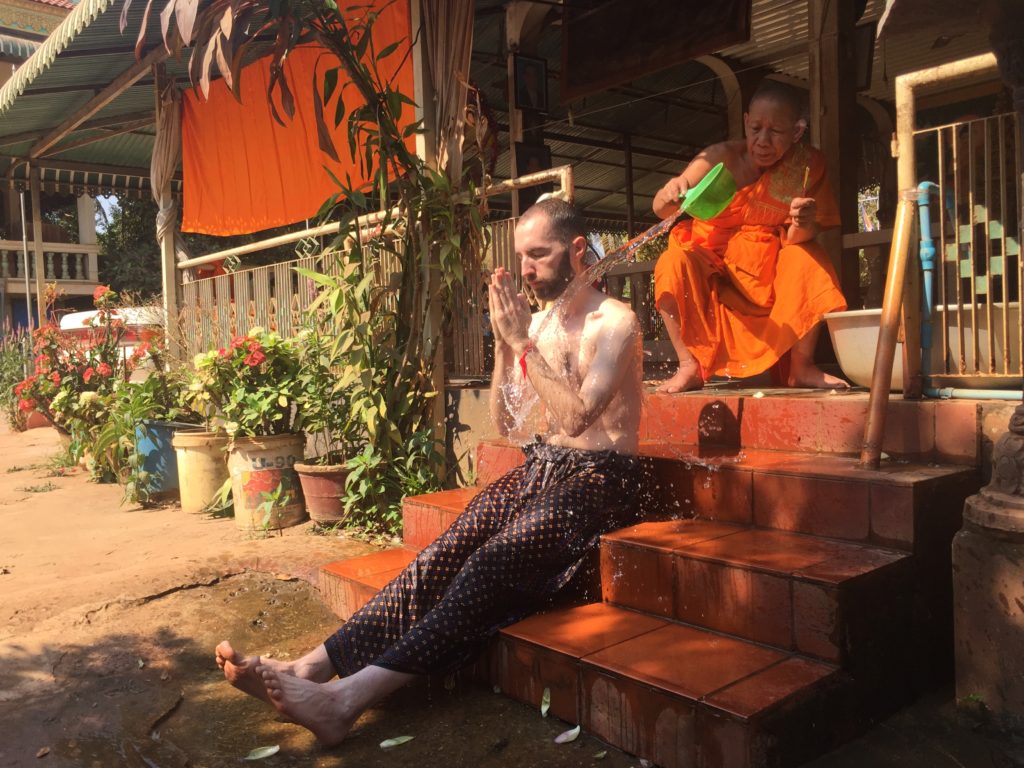
THE O.G. WATER BLESSING
The basic idea is that a Buddhist king came to power in Cambodia. That instilled the fear of forced conversion in the Hindu populace.
Instead, the king showered his new subjects with cool, lotus-infused water and told them religion was irrelevant. The intention of the water was to bless and bring everyone together regardless of faith.
The original Buddhist water blessing.
I was enjoying my blessing, smiling broadly while trying not to swallow the cool water as it streamed down my face. The water was a refreshing contrast with the sunlight that radiated down and warmed my chest.
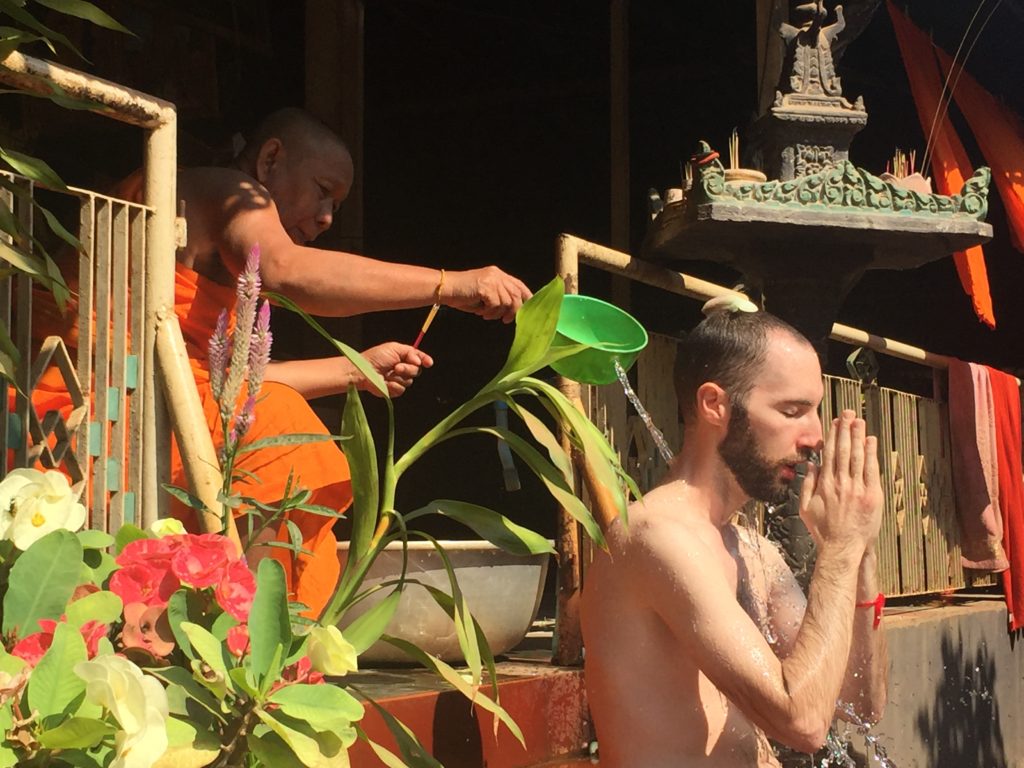
If the monk had kept at it I would have gladly sat on those steps at Wat Po Bantey Chey for hours… but eventually the chanting stopped.
It was over.
A few hours later I had an experience of a slightly different variety. I call it My Cambodia Me Too Moment
After changing I took a seat on the tiled floor in front on the monk.
He took my right hand in his and began twisting orange and red threads together, creating a multicolored bracelet around my wrist. Why such colors? Because they represent the sun at its best; sunrise and sunset, when looking into it can do no harm.
The bracelet is a reminder to always be your best — calm, compassionate, mindful and beautiful.
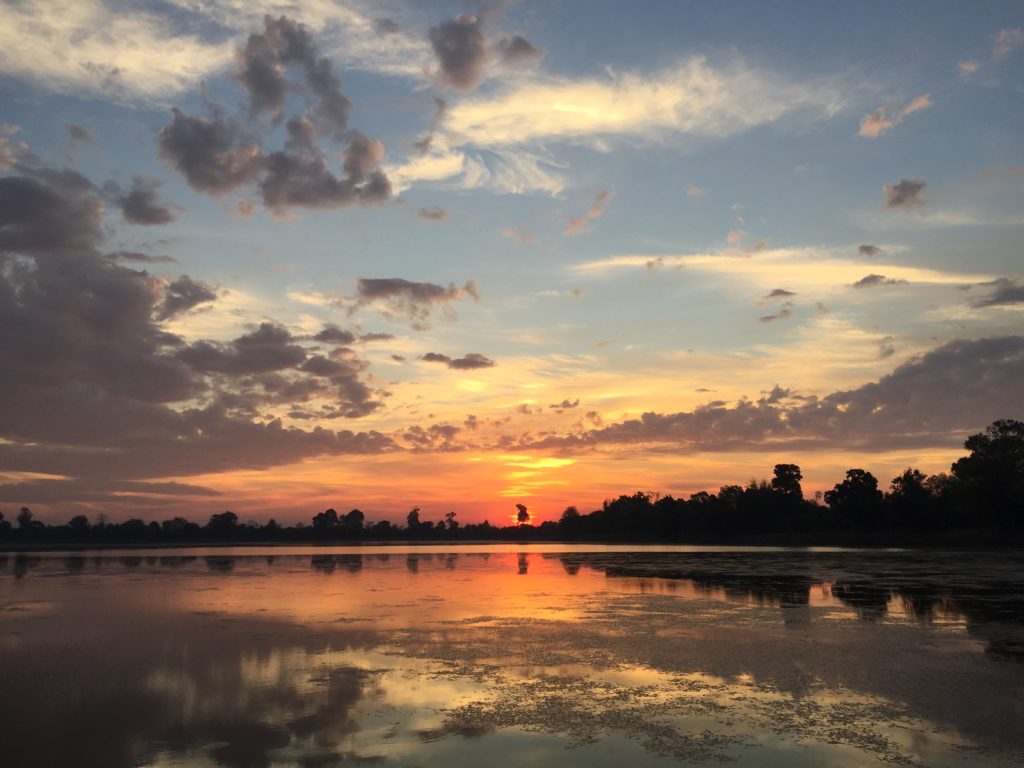
With a laugh, he grabbed scissors and snipped the excess. He offered a genuine smile only a monk can offer, thanked me in his native Khmer, then wished me well.
I was blessed.
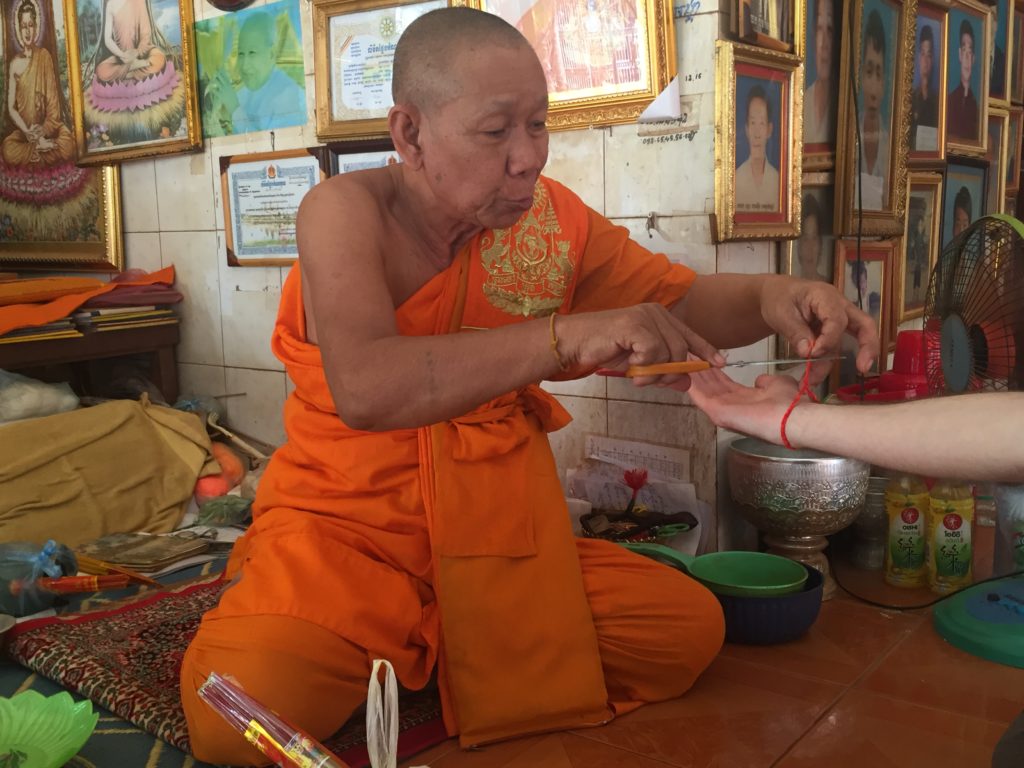
DO IT YOURSELF
What is a Buddhist Water Blessing?
Buddhists have adopted water blessings as a means of purification, renewal and good luck. Locals will head to their neighborhood temple or invite a monk out to the family home for special occasions; birth, marriage, moving into a new home. Any event that calls for good luck and positivity is fair game.
How to Receive a Buddhist Water Blessing?
If you’re a westerner, picture it like this for reference. People don’t randomly walk into a church and expect to be blessed. It’s just… weird. Similar logic applies for the water blessing. As an outsider, you’ll most likely need a local connection or a guide of some type to arrange the experience.
Of course you could pop into a smaller pagoda, ask around and see what happens, but don’t get your hopes up.
I paid about US$25 (101,000 Cambodian Riel (KHR)) for my experience. The fee included round trip transportation via tuk tuk and an offering. The whole thing took about two hours.
Do I Have to be a Buddhist?
Not at all, though it may be a more meaningful experience if you are. I would classify myself as rather pro Buddhism, so it had some spiritual significance. Do it more to enjoy the experience, less to tick something off your travel checklist.
Where to Receive a Buddhist Water Blessing?
My blessing took place just outside Siem Reap, Cambodia at a place called Wat Po Bantey Chey. I arranged everything in advance through a local agency. The water blessing no longer appears on their website, but you may have luck with an enquiry.
What Else About Buddhism?
Familiarize yourself with the basics about Buddhism and etiquette before accidentally causing offense on the temple grounds.
This interesting list of the 227 rules monks are supposed to live by is way beyond “the basics”, so I’ve condensed it into nine items to be conscious of when visiting a Buddhist temple.
- Greet monks with hands together in front of your face
- Never touch a monk unless they initiate contact — especially important for women!
- Remove footwear prior to entering any temple or building
- Turn off your phone
- No smoking, chewing gum, etc.
- Avoid pointing your feet at a monk or Buddha shrine/statue
- Do not wear any type of hat or helmet
- Cover your shoulders and knees. No tank tops.
- Ask before taking photos (I went in fully expecting a private, no-photo experience, but my guide asked if I would like pictures. He happily snapped all of the photos in this post.)
Lastly, make a donation. Buddhist temples and pagodas operate almost exclusively via the goodwill of their communities. In much of Southeast Asia that means poor folks supporting other poor folks. Lend a hand.
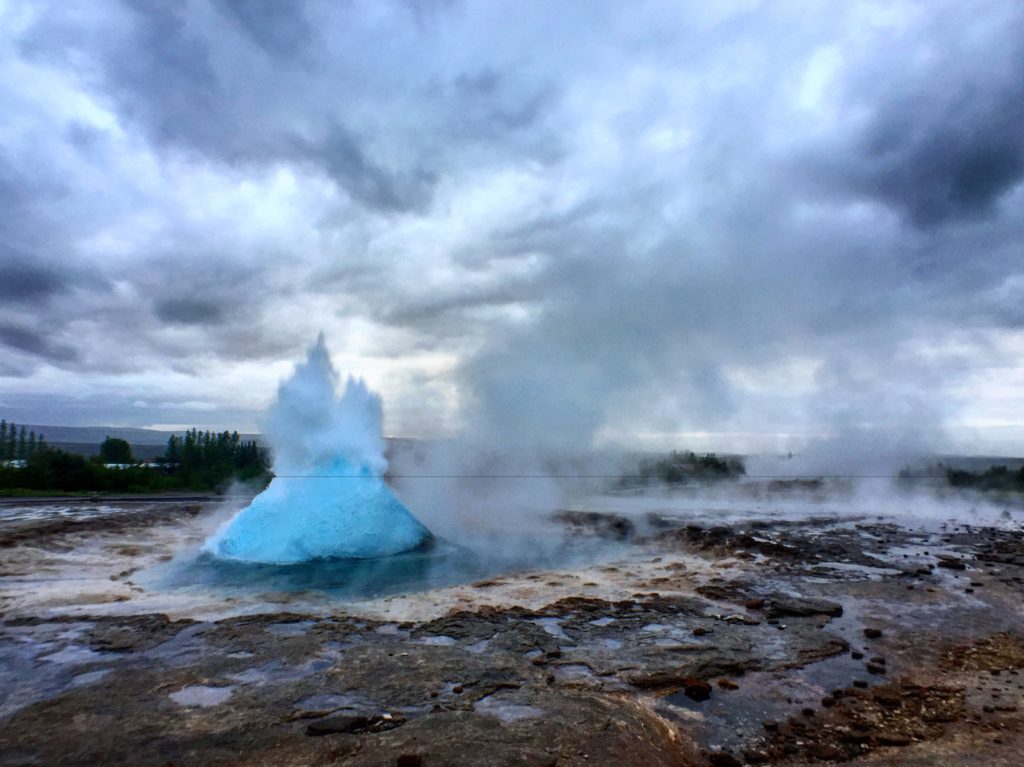
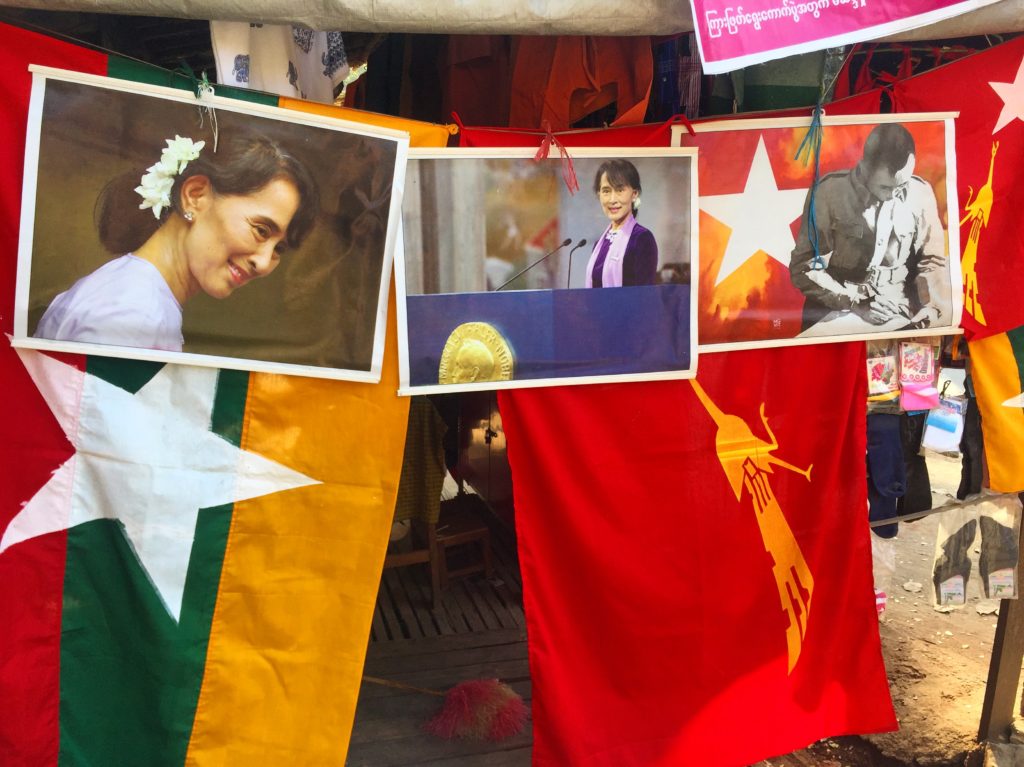
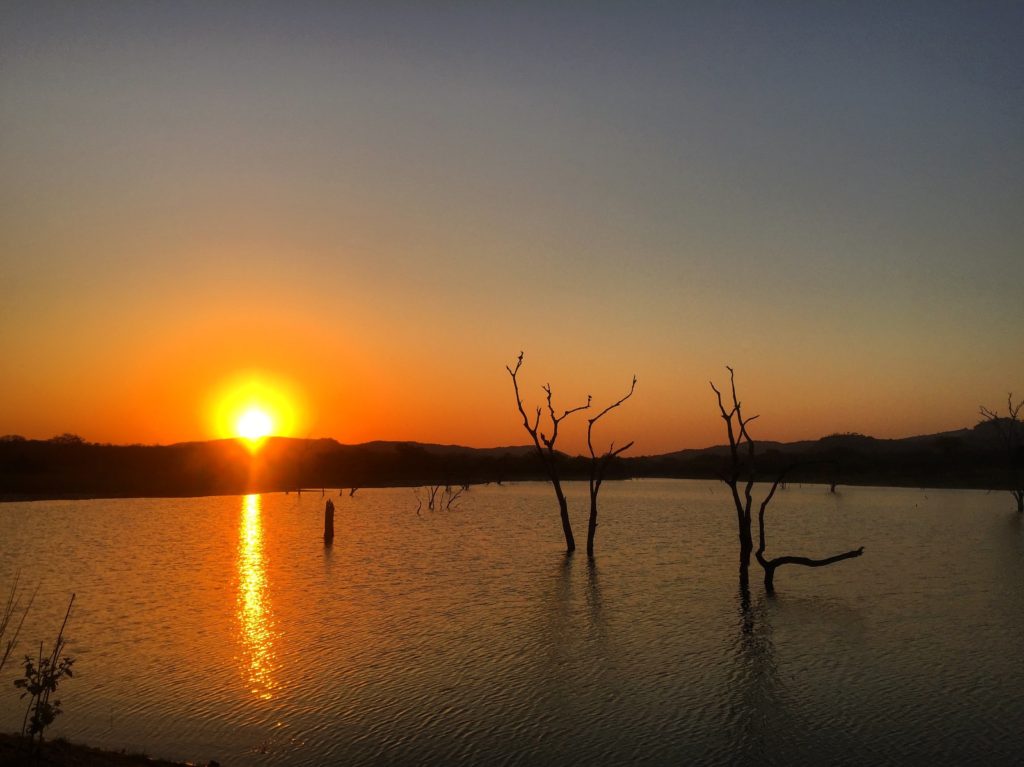
We were lucky enough to have our hotel arrange a blessing for all the guests (small boutique hotel so only about 20 people) on New Years Eve 2017… I loved the experience but next time I think a Water Blessing will defintiely be the way to go… It was offered to us via the hotel and a tour agency but we didnt book it unfortunately – Doh!
But now you’ll appreciate it even more!